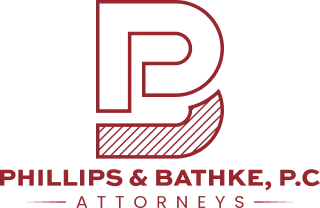
If you have come up with something innovative, such as an idea that could change the game in your industry or make life easier for many people, you need to protect it.
The time between conceiving an invention and filing for a patent can be risky. Unfortunately, one wrong move could cost your rights. So, how do I protect my invention before filing a patent? Here is how to safeguard your invention while you are getting your patent application ready to send off.
Keep It Confidential
At this point, the most important rule is not to disclose your invention publicly before you file a patent application. That means no social media posts, no funding campaigns, and no trade show demonstrations until you have legal protection in motion.
Remember that in the U.S., public disclosure can start the clock ticking. You will have a one-year grace period from your first public disclosure to file a patent. However, in most other countries, you lose your rights immediately after disclosure. One slip-up could make your invention non-patentable abroad. That is not a mistake that can be undone.
If you do need to share details with a potential investor or manufacturer, make sure you use a Non-Disclosure Agreement (NDA). With an NDA, that legally binds the other party to keep your invention secret.
Additionally, it prevents them from using it for their own benefit. While that is not foolproof, it provides solid legal grounds to demonstrate that you are serious about confidentiality.
Keep Detailed Records
Documentation is your best friend. You want to keep a detailed, dated record of your invention process. This includes everything from sketches and prototypes to design notes and testing results.
These records can help establish that you were the original inventor and prove the timeline of your work if disputes ever arise.
File a Provisional Patent Application
If your invention is far enough along to describe, but you are not ready to file a full patent, a provisional patent application (PPA) can buy you time. A provisional filing establishes an early filing date without requiring a complete formal patent application.
With that, you have 12 months to develop your invention, test its commercial potential, or seek funding before filing a formal patent application. During that year, you can legally mark your invention as Patent Pending.
Protect Related Intellectual Property
Inventions do not exist in a vacuum. Your idea might also involve branding, product names, or creative designs that deserve other forms of protection. You might also file for:
- Trademarks to protect brand names, logos, or slogans associated with your invention.
- Copyrights to protect written materials, software code, or artistic elements.
- Trade secrets if your invention relies on a formula, process, or method you want to keep confidential indefinitely.
With this approach, if one form of protection does not apply, others might still shield your business interests.
Watch Out for Joint Ownership Traps
If you have been collaborating with others, such as engineers, designers, or friends helping you brainstorm, ownership rights can get murky. Without clear agreements, those contributors might be considered co-inventors. That can give them legal rights to the patent.
To avoid disputes, clarify ownership early. You want to have agreements that state who owns what and how rights will be handled if the invention is patented or commercialized. This step can save you from headaches later when money becomes a factor.
Consult an Intellectual Property Attorney

Yes, you can file a provisional patent application on your own, but having an experienced intellectual property procurement and transactions attorney in your corner helps with the entire process. They can:
- Evaluate whether your invention is patentable
- Help you draft a strong provisional or non-provisional patent application
- Advise on confidentiality, ownership, and licensing issues
- Conduct prior searches to assess whether existing patents or similar inventions exist
Your invention is an investment. Legal assistance makes sure that the investment is properly protected and positioned for long-term success.
Protect First, Share Later
So, now that you know how to protect your invention before filing a patent, you can move forward with some confidence. While you may want to shout from the rooftops about your creation, it is better to play it safe and shield it from any trouble.
If you are looking for help with a patent or are starting on the path of legally protecting any innovation, Phillips & Bathke, P.C. are ready to assist. Reach out to us to schedule a consultation to learn about your options.


